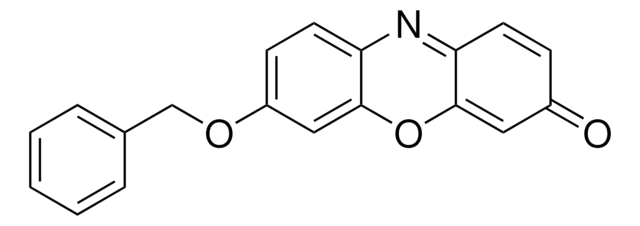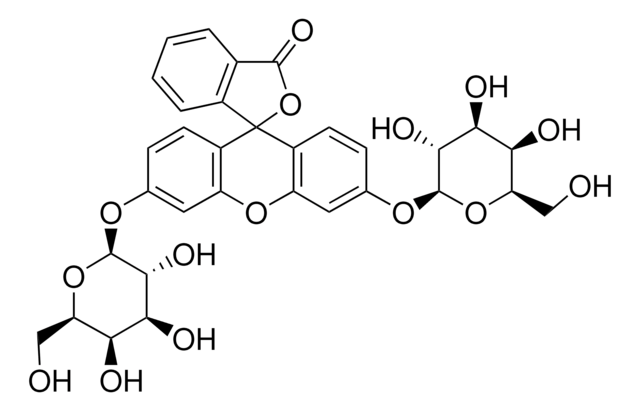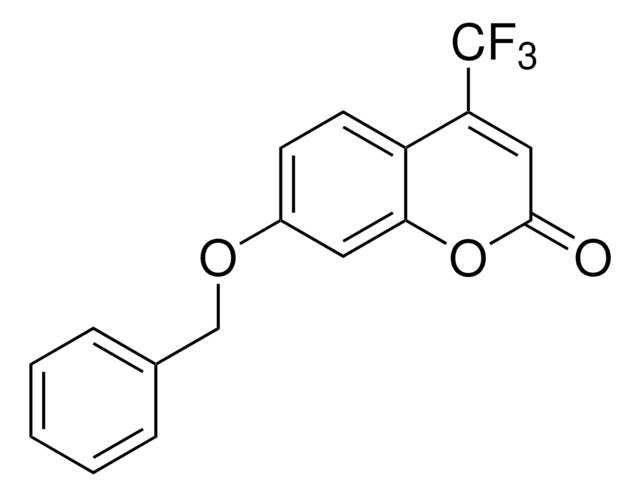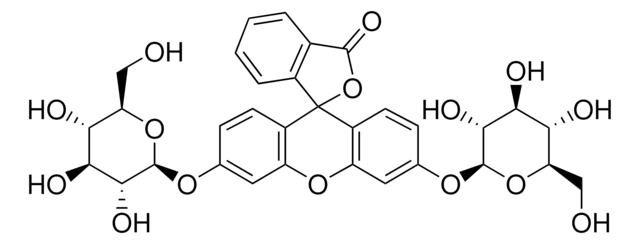P0928
Resorufin pentyl ether
Synonym(s):
7-Pentyloxy-3-phenoxazone, 7-Pentyloxy-3H-phenoxazin-3-one, O7-Pentylresorufin, Pentoxyresorufin
About This Item
Recommended Products
Assay
≥98% (TLC)
Quality Level
form
powder
solubility
acetonitrile: 0.95- 1.05 mg/mL, clear, orange
storage temp.
2-8°C
SMILES string
CCCCCOc1ccc2N=C3C=CC(=O)C=C3Oc2c1
InChI
1S/C17H17NO3/c1-2-3-4-9-20-13-6-8-15-17(11-13)21-16-10-12(19)5-7-14(16)18-15/h5-8,10-11H,2-4,9H2,1H3
InChI key
ZPSOKQFFOYYPKC-UHFFFAOYSA-N
Looking for similar products? Visit Product Comparison Guide
General description
Application
Biochem/physiol Actions
Signal Word
Warning
Hazard Statements
Precautionary Statements
Hazard Classifications
Eye Irrit. 2 - Skin Irrit. 2 - STOT SE 3
Target Organs
Respiratory system
Storage Class Code
11 - Combustible Solids
WGK
WGK 3
Flash Point(F)
Not applicable
Flash Point(C)
Not applicable
Personal Protective Equipment
Certificates of Analysis (COA)
Search for Certificates of Analysis (COA) by entering the products Lot/Batch Number. Lot and Batch Numbers can be found on a product’s label following the words ‘Lot’ or ‘Batch’.
Already Own This Product?
Find documentation for the products that you have recently purchased in the Document Library.
Articles
Phase I biotransformation reactions increase drug compound polarity, mainly occurring in hepatic circulation.
Our team of scientists has experience in all areas of research including Life Science, Material Science, Chemical Synthesis, Chromatography, Analytical and many others.
Contact Technical Service









